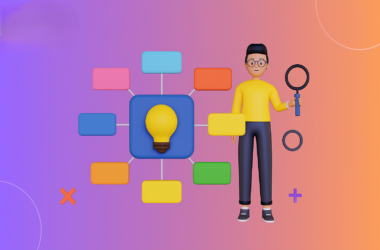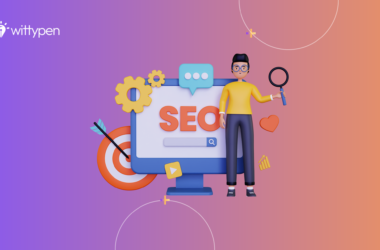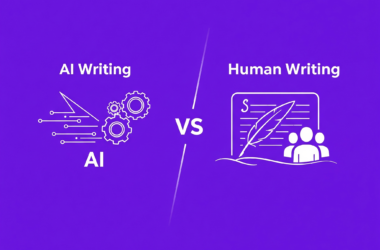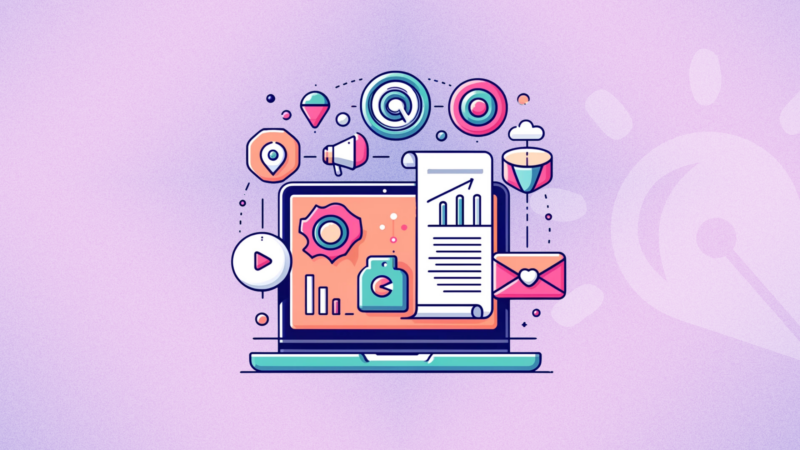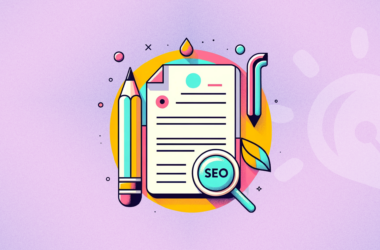With so much competition in the SaaS market, acquiring new customers can feel like scaling a never-ending mountain. In fact, according to a recent study, the median Customer Acquisition Cost (CAC) has surged by 180%. Traditional outbound marketing tactics like cold calling and mass advertising are becoming increasingly expensive and less effective.
This is where inbound marketing comes in as a refreshing alternative. Instead of interrupting potential customers with unsolicited messages, inbound marketing focuses on generating a steady stream of qualified leads who are already interested in what you have to offer, ultimately resulting in a more cost-effective and predictable customer acquisition process.
But what is inbound marketing? And how do you implement this strategy for your SaaS inbound marketing for business? Let’s find out!
Table of Contents
What is SaaS Inbound Marketing?
SaaS inbound marketing is a strategic approach specifically designed to attract, engage, and convert leads organically for businesses. It focuses on creating valuable content and a user-centric experience that draws potential customers to you, rather than relying on traditional outbound marketing tactics like cold calling or intrusive advertising.
Think of it as building a bridge between your ideal customer and your product. By providing informative and helpful content, you address their pain points and showcase the value proposition of your SaaS solution. This fosters trust, builds relationships, and ultimately leads to organic customer acquisition.
Here’s how inbound marketing works for SaaS companies:
- Attract: You create high-quality content like blog posts, social media content, ebooks, and webinars that address the specific needs and challenges of your target audience. This content attracts potential customers who are already interested in solving the problems your product addresses. HubSpot, a marketing automation leader, dominates the content marketing game. They create informative blog posts, ebooks, and webinars on marketing topics, attracting and nurturing leads.
- Engage: Once you’ve attracted potential customers, you nurture them with targeted content that provides further value and showcases your expertise. This could include free trials, case studies, and email marketing campaigns that educate them about the benefits of your SaaS product.
- Convert: By providing valuable content and building trust, you convert qualified leads into paying customers. This could involve offering product demos, free consultations with your sales team, or special introductory offers.
Inbound marketing is a sustainable, long-term strategy that allows you to build relationships with potential customers over time. It’s a win-win situation: you provide valuable information that helps potential customers solve their problems, and they become more receptive to your product when they’re ready to make a purchase.
Inbound vs Outbound: Why Inbound Wins for SaaS

Traditional outbound marketing often feels like an interruption. It’s the telemarketer call you didn’t ask for, the generic ad that doesn’t resonate. Inbound marketing is more about providing value upfront and attracting potential customers who are already interested in what you offer.
Here’s a breakdown of the key differences between SaaS inbound marketing and outbound marketing:
| Inbound Marketing | Outbound Marketing |
| You attract customers by creating valuable content they seek out. | You interrupt potential customers with direct messages. |
|
Focus: Attract & Engage |
Focus: Push & Interrupt |
|
Methods: Content Marketing, SEO, Social Media, Email Marketing |
Methods: Cold Calling, Email Blasts, Banner Ads |
|
Benefits: Targeted Audience, Builds Trust & Relationships, Cost-Effective |
Drawbacks: Interruptive, Generic Messaging, Can Be Expensive |
For SaaS companies, inbound marketing is a clear winner. It allows you to target a specific audience with laser focus, nurture leads through the buyer’s journey, and ultimately convert them into loyal customers.
The Power of the Buyer’s Journey

Every customer goes through a series of stages before making a purchase decision. This is known as the buyer’s journey. Here’s a breakdown of the key stages:
1. Awareness Stage
Here, your potential customer is realizing they have a problem or need. Your content should focus on education and awareness, not selling.
Content Examples
- Blog posts: Industry trend articles, “5 Signs You Need X,” “How To…” guides
- Videos: Educational explainers, customer pain point stories
- Social media: Tips, infographics, polls related to the problem
2. Consideration Stage
Now, they’re researching solutions. Provide content that showcases your expertise and positions your product/service as the answer.
Content Examples
- Ebooks: In-depth guides on solving the problem
- Webinars: Demos of your solution, expert interviews
- Case studies: Showcasing how you helped similar customers
- Free trials or demos: Let them experience your product firsthand
3. Decision Stage
They’re comparing options. Focus on building trust and demonstrating why your solution is the best fit.
Content Examples
- Product comparisons: Highlight your strengths compared to competitors
- Customer success stories: Testimonials and case studies showcasing results
- Live chat/webinar: Address specific questions and concerns
- Free consultations: Personalized advice from your sales team
By providing valuable content at each stage, you nurture leads and guide them toward choosing your solution.
Understanding the buyer’s journey is crucial for creating an effective inbound marketing strategy. By aligning your content with each stage, you can guide potential customers toward your product and ultimately convert them into paying customers.
Building a High-Converting Sales Funnel
A sales funnel visualizes the journey a potential customer takes from initial awareness to final conversion. Here’s how to build a high-converting sales funnel for your SaaS inbound marketing:
- Top of the Funnel (TOFU): Attract potential customers with informative blog posts, social media content, and downloadable resources like ebooks and white papers. This content should focus on building brand awareness and establishing your expertise.
- Middle of the Funnel (MOFU): Nurture leads who have shown initial interest by offering gated content like case studies, webinars, and free trials. This content should address their specific needs and showcase the benefits of your SaaS product.
- Bottom of the Funnel (BOFU): Convert qualified leads into paying customers by providing product demos, free consultations, and special offers. This content should showcase the value proposition of your product and demonstrate how it can solve their specific problems.
By creating a well-defined sales funnel and aligning your content with each stage, you can effectively guide potential customers through the buyer’s journey and ultimately convert them into loyal customers.
Essential Tools for Your Inbound Arsenal
Here are some key platforms that will help you execute your SaaS inbound marketing strategy:
- Content Management System (CMS): This is your content headquarters. Platforms like WordPress or HubSpot allow you to easily create, publish, and manage your blog posts, landing pages, and other website content.
- Email Marketing Platform: Email is a powerful tool for nurturing leads and promoting your content. Platforms like Mailchimp or Constant Contact allow you to create targeted email campaigns, track open rates and click-through rates, and measure the effectiveness of your email marketing efforts.
- SEO Tools: Search Engine Optimization (SEO) helps your website rank higher in search engine results pages (SERPs). Tools like Ahrefs or SEMrush allow you to research keywords, optimize your content, and track your website’s organic traffic.
- Social Media Management Tools: Platforms like Hootsuite or Buffer help you schedule and publish content across different social media channels, track engagement metrics, and manage your online reputation.
- Analytics Tools: Data is your best friend in inbound marketing. Tools like Google Analytics provide valuable insights into your website traffic, user behavior, and the effectiveness of your marketing campaigns.
These are just a few of the many tools available to help you execute your inbound marketing strategy. The best tools for you will depend on your specific needs and budget.
Content Marketing Strategies for SaaS
Content is the cornerstone of any successful inbound marketing strategy. Here are some specific content marketing strategies tailored for SaaS inbound marketing :
- Focus on Problems: Create content solving your ideal customer’s challenges (keyword research helps!).
- Become a Thought Leader: Showcase expertise with high-quality ebooks, white papers, and webinars.
- Variety is Key: Experiment with blog posts, infographics, videos, and podcasts to keep your audience engaged.
- Build Trust with Social Proof: Customer testimonials and case studies are powerful trust builders. UserLeap, a user testing platform, understands the power of social proof in building trust and attracting potential customers.
- SEO is King: Optimize content with relevant keywords to rank higher in search engines. SEO leader Ahrefs practices what they preach. Their website is optimized for relevant keywords, their blog educates on SEO, and they actively engage in SEO discussions.
Measuring Success with Inbound Marketing
Data is king in the world of inbound marketing. Here are some key metrics to track the success of your inbound marketing efforts:
- Website Traffic: Track the number of people visiting your site and how they found you.
- Lead Generation: Keep an eye on the number of leads you generate through your inbound marketing campaigns.
- Conversion Rates: Closely monitor the percentage of website visitors who convert into leads or paying customers.
- Customer Lifetime Value (CLTV): This is the total revenue a customer generates throughout their relationship with your business.
- Engagement Metrics: Metrics like social media engagement, email open rates, and click-through rates gauge how effectively your content is resonating with your audience.
Conclusion
Inbound marketing offers a powerful and sustainable approach to customer acquisition for SaaS businesses. By creating valuable content, nurturing leads, and building trust with potential customers, you can attract a steady stream of qualified leads who are genuinely interested in your product. This approach fosters long-term customer relationships, drives sustainable growth for your business, and ultimately builds a loyal customer base that loves your product.
Ready to embark on your inbound marketing journey and conquer customer acquisition? Wittypen is your companion on this journey. We bring to the table AI-powered tools and a network of professional writers to help you accelerate the content creation process with a seal of quality and originality.
Let’s discuss how Wittypen can help you develop and execute a winning inbound marketing strategy for your SaaS business. Contact us today!


